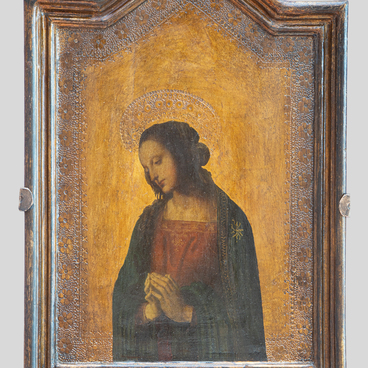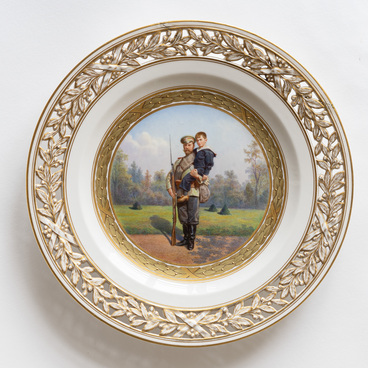The “Marie Antoinette and Her Children” tapestry is one of the most iconic pieces in the collection of the Alexander Palace. A tapestry is a hand-woven lint-free wall rug. In a narrower sense, it is the product of the still operating manufactory in Paris, established in the suburb of Saint-Marcelle in 1662.
The tapestry placed in the Corner Drawing Room of the Empress Alexandra Feodorovna reproduces the composition of the painting by the famous French artist Elisabeth Vigée-Lebrun, which was created a few years before the Great French Revolution. It depicts Marie Antoinette, Queen of France and Navarre and wife of Louis XVI, with her three children — daughter Marie Thérèse and sons Louis Joseph Xavier Francois and Louis Carles. The fate of the queen was tragic; she was executed by guillotine during the revolution.
In 1902, the president of France, Émile Loubet, paid an official visit to Russia. On May 20 [O.S. 7 May], the French cruiser Montcalm arrived at the Kronstadt roadstead. The president boarded the imperial yacht “Alexandria” and sailed with Nicholas II to Peterhof. Later he visited the French Embassy in St. Petersburg. The next day the French delegation left for Krasnoye Selo, for the big maneuvers of the Russian army. Loubet visited Tsarskoe Selo, where a gala dinner was held at the Great Palace on May 22 [O.S. 9 May]. The president did not come empty-handed — he brought a tapestry as a gift to the empress Alexandra Feodorovna was delighted to receive the present from the head of the French Republic, and the tapestry found its place in the apartments of the crowned family. It was placed in the living room opposite the portrait of the empress.
Interestingly, some contemporaries were wary of the gift. State Secretary Alexander Polovtsov, who visited the Alexander Palace on 18 November 1905, wrote in his diary:
The tapestry placed in the Corner Drawing Room of the Empress Alexandra Feodorovna reproduces the composition of the painting by the famous French artist Elisabeth Vigée-Lebrun, which was created a few years before the Great French Revolution. It depicts Marie Antoinette, Queen of France and Navarre and wife of Louis XVI, with her three children — daughter Marie Thérèse and sons Louis Joseph Xavier Francois and Louis Carles. The fate of the queen was tragic; she was executed by guillotine during the revolution.
In 1902, the president of France, Émile Loubet, paid an official visit to Russia. On May 20 [O.S. 7 May], the French cruiser Montcalm arrived at the Kronstadt roadstead. The president boarded the imperial yacht “Alexandria” and sailed with Nicholas II to Peterhof. Later he visited the French Embassy in St. Petersburg. The next day the French delegation left for Krasnoye Selo, for the big maneuvers of the Russian army. Loubet visited Tsarskoe Selo, where a gala dinner was held at the Great Palace on May 22 [O.S. 9 May]. The president did not come empty-handed — he brought a tapestry as a gift to the empress Alexandra Feodorovna was delighted to receive the present from the head of the French Republic, and the tapestry found its place in the apartments of the crowned family. It was placed in the living room opposite the portrait of the empress.
Interestingly, some contemporaries were wary of the gift. State Secretary Alexander Polovtsov, who visited the Alexander Palace on 18 November 1905, wrote in his diary:



